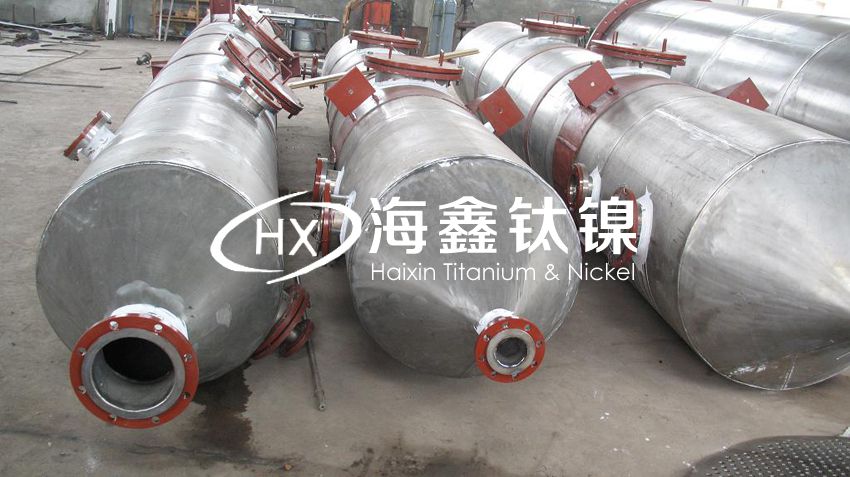To prevent corrosion and leakage in welded joints of titanium equipment, the following measures can be implemented:

Structural Design Improvements:
Minimize gaps and stagnant zones. Replace bolt or rivet connections with welded joints whenever possible.
Use butt-welded joints instead of spot-welded lap joints.
Optimize fluid flow within the equipment to avoid dead zones or stagnant flow areas.
Material and Surface Treatment:
Select materials with high crevice corrosion resistance (e.g., TA9 or TA10 titanium alloys) instead of commercial pure titanium in gap-prone areas.
Apply surface treatments such as coating, oxidation, or anodizing to enhance titanium’s crevice corrosion resistance.
Specialized Gasket Materials:
Use gaskets with unique designs and compositions to mitigate crevice corrosion environments.
Galvanic Corrosion in Titanium
Depending on the medium, titanium’s galvanic corrosion can be categorized into two types:
Type 1 Media (e.g., salt solutions, nitric acid, acetic acid, seawater): Titanium exhibits excellent corrosion resistance in these media. However, when coupled with another metal (with titanium as the cathode due to its oxide film), the other metal (as the anode) may suffer accelerated galvanic corrosion.
Type 2 Media (e.g., hydrochloric acid, sulfuric acid, oxalic acid): Titanium may exist in either an active or passive state. Contact with other metals can increase corrosion rates of either titanium or the coupled metal.
Measures to Mitigate Galvanic Corrosion:
Insert insulating materials between dissimilar metals to prevent galvanic cell formation.
Avoid configurations where titanium acts as a large cathode paired with a small anode.
Increase spacing or reposition dissimilar metals.
Apply cathodic protection.
Erosion and Impingement Corrosion:
Titanium is susceptible to erosion and impingement corrosion in high-velocity or fluctuating flow conditions. Design considerations include:
Limiting flow velocities below critical thresholds.
Installing protective baffles in erosion-prone areas and avoiding abrupt flow changes.